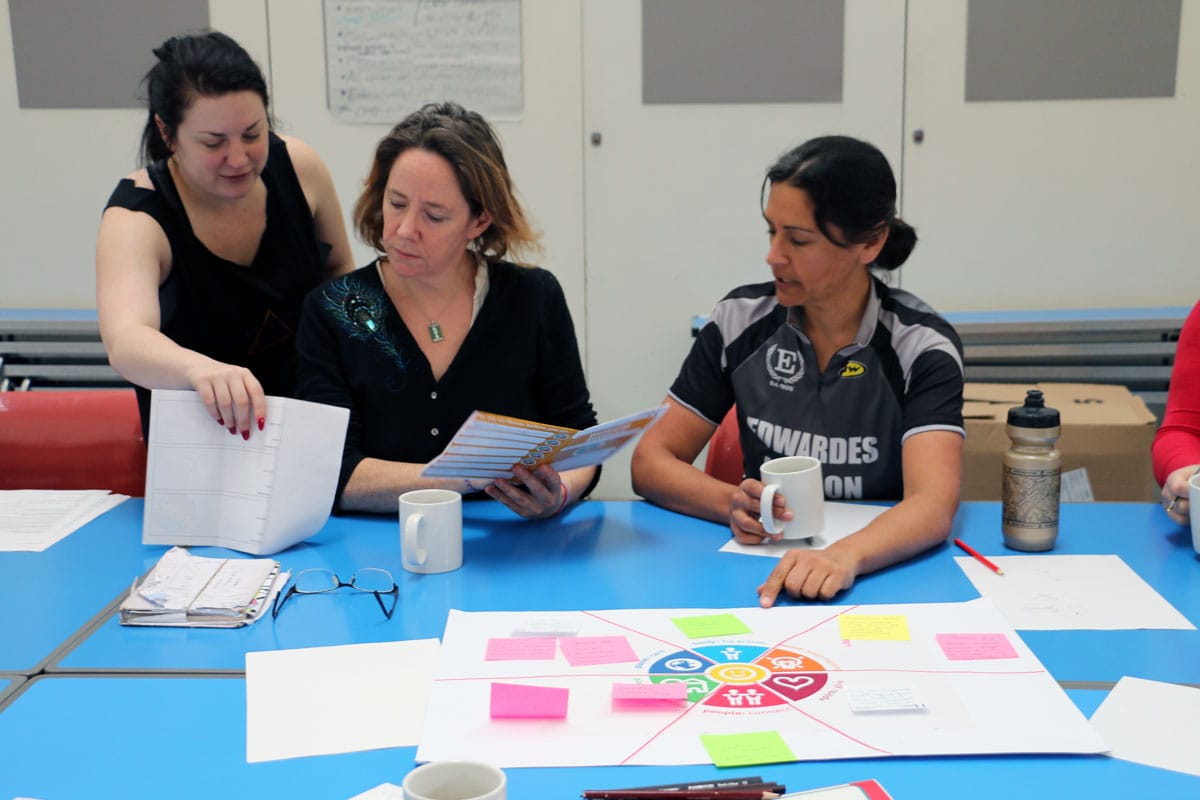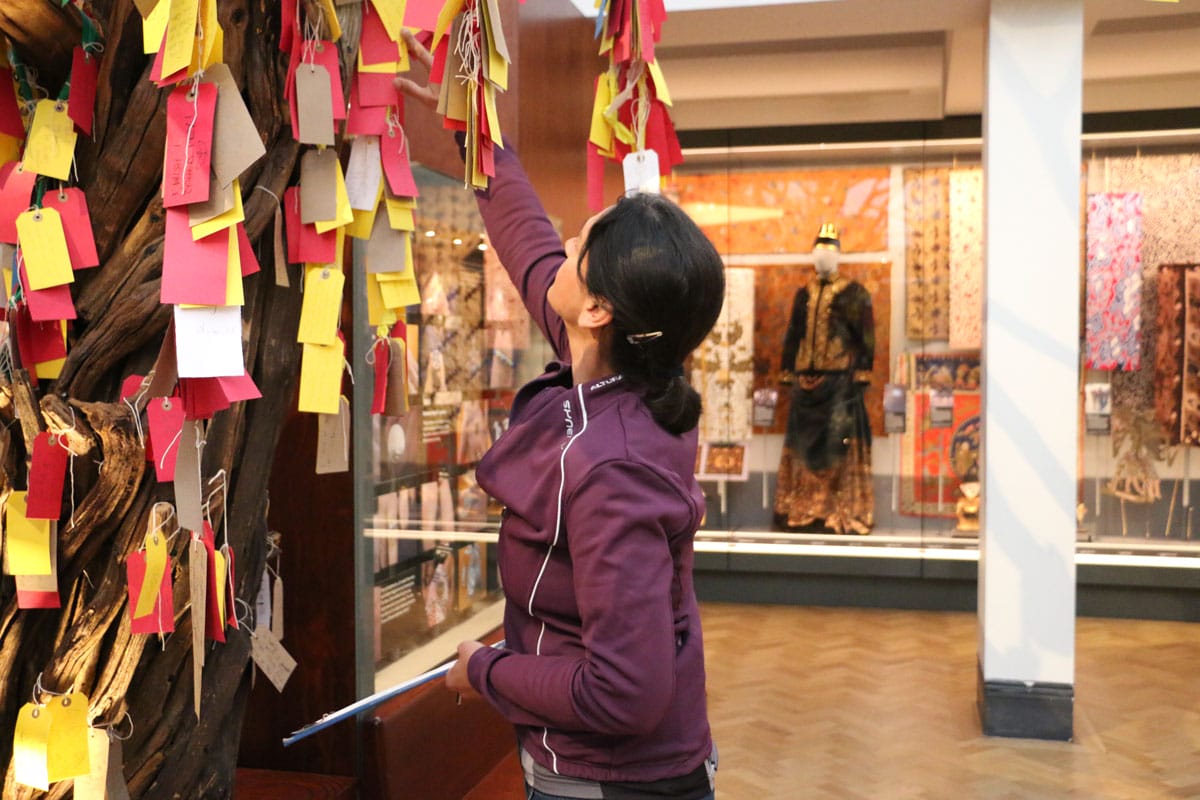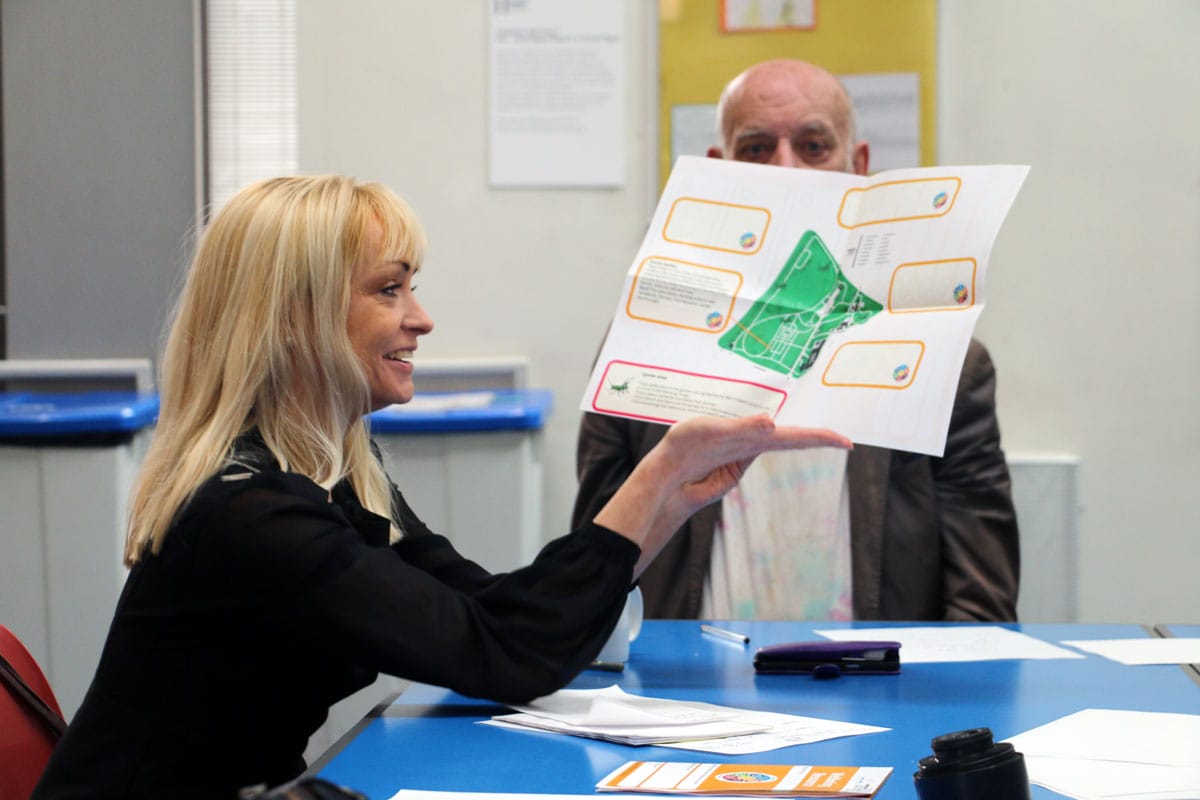Could you explain the process of creating the resource – what did you do?
Participants of SlaM Recovery College attended our ‘Museums and Wellbeing’ course and, over a period of 6 weeks, developed the Horniman’s first wellbeing resource available to adults to explore the Museum with the aim of sustaining or boosting their mood.
We took the Wheel of Wellbeing, a visual framework based on positive psychology, as a basis for the activities to create an accessible introduction to the Museum and Gardens. As individuals or pairs we wandered around the building, responding to the displays by asking different questions about a variety of items and places. We then returned to the group, sharing our thoughts and suggestions, and discussed how our ideas might work.
What is in the resource?
The Wellbeing Wander is a trail of sorts, a way of discovering what the Horniman has to offer in (hopefully!) manageable portions; it’s a great introduction to the Horniman if you haven’t visited before.
There are several activities to do both in the galleries and out in the Gardens, with some pointers to help you find your way. There are also some things to think about before you get there too; how you might think about objects around your own home, as well as the objects to see around the Horniman.
We’ve also provided all the useful information about facilities that can make your trip to Forest Hill a bit easier. It’s a guide that you can use again when you visit in future. It may even enhance your experience in other museums and galleries too.
Who is the resource for and why?
The resource is, first and foremost, aimed at those who have their mental and physical wellbeing in mind, but it is available to everyone.
Those who have lived experience of conditions and issues, such as anxiety or low mood, may find it particularly beneficial. Walking around the Horniman can be a mindful and calming experience, and we’ve also provided a few hints of where to go if you’d like a few moments of quiet time to yourself.
Why did you want to become involved?
I worked in a heritage collection for many years before working in mental health. I’m passionate about the importance of museums and galleries in life in general, and encouraging new audiences to discover all the amazing items they hold. I’m particularly excited about the positive role museums and gardens can play in improving wellbeing.
How could someone use the Horniman for wellbeing?
The Horniman is well suited for a project such as this, as it has the benefit of wonderful Gardens alongside the amazing Museum collections.
There is a variety of activities that you can participate in that can marry with the actions on the Wheel of Wellbeing, actions that have been proven to help wellbeing. This might be the very act of learning something new, taking time to observe and respond to the things around you, or just being in the open air and walking around the Gardens.
What do you want visitors to know about the resource and how would you recommend people use it?
I’d like to stress that it’s available and can be used by anyone even though it has been developed with wellbeing and mental health in mind.
You can follow every part of it or just use certain sections. You could use it as a generalised guide and apply it to other parts of the Horniman that we’ve not mentioned on the resource itself if you wish. If you know someone who gets anxious when travelling or going somewhere new, we’ve included some pre-trip things to think about to help get you on your way.
Did you learn or discover anything during the process?
I discovered just how much I miss working in the heritage sector and engaging with people who visit these places.
It was great to work with others in SLaM Recovery College who have the same enthusiasm for learning and collaborating on resources for the public at large. Working alongside a diverse range of others meant that I gained from their perspectives and it made me think about the Horniman and the needs of its potential visitors in a new way.
Why is it important to have resources like this in museums?
It’s important to acknowledge that different people interact with museums differently, and also that the spaces can be used in both traditional and non-traditional ways.
I hope that resources such as these might encourage people who don’t visit museums often, or even at all, to come and investigate what’s available at the Horniman.
The Wellbeing Wander resource and Mindful Museum of Me are available to download below, and behind the ticket desk.





